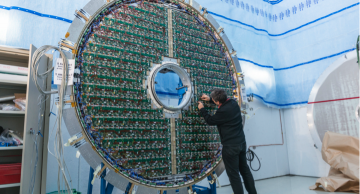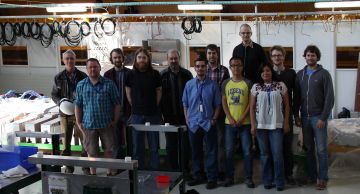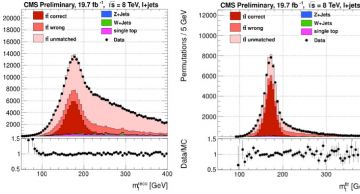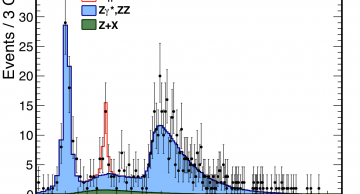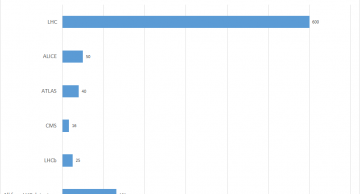We have had three important events on the “Higgs front” in the past few days:
⁃ Our H→ττ paper (HIG-13-004) is now accepted for publication by JHEP
⁃ The last of the “legacy” analyses, H→γγ, has now entered CWR and is heading towards publication, in…
News
|
barneyd |
Collaboration
As reported previously (ECAL Preshower removed from detector for repairs), both Preshower (ES) endcaps were removed temporarily from CMS and moved to the SX5 building at the end of 2013. This was due to four faulty “feedthroughs” (two per endcap)…
|
carlin |
Collaboration
The Trigger Studies Group (TSG) had its first workshop of 2014 in LAPP Annecy, on Mon-Wed Apr 7-9. TSG workshops are intense events, attended by around 40 people, where questions to the speakers during the talks are encouraged and unlimited, and 20…
|
sphicas |
Collaboration
CMS news from the past two weeks:
En route to 2015: update from physics coordination, 2014-04-04
Spring 2014 Offline/Computing Week
Completion of CSC innermost station refurbishment and testing
CMS news posted on the public Web site:
CMS…
|
malgeri |
Collaboration
After the wave of new and exciting results presented at the Winter conferences, the physics object and analysis groups are now focusing on the preparation of the CSA14 readiness test.
We have clustered the CSA14 “analysis” efforts around a few…
|
wulz |
Collaboration
From the desk of the CB Chairperson
The CB Chair team is pleased to issue the second newsletter of the year.
Draft minutes of the last CB meeting at CERN (28 Feb. 2014) are here.
Some highlights of the CB meeting during this CMS Upgrade Week in…
|
sphicas |
Collaboration
The spring joint offline and computing week was held at CERN March 25-28 (the full agenda can be found in Indico). The main theme of the week was the readiness of the CMS computing infrastructure and the CMSSW software for the 2015 startup. The…
|
sshalhou |
Collaboration
During the week of March 19, the CMS endcap muon upgrade passed a major milestone, with the completion of the certification of the final 36 Cathode Strip Chambers (CSC) for reinstallation on the CMS detector. The 72 chambers comprising the first…
|
Anonymous |
Physics
The new top-quark mass measurement is the single most precise result as yet.
The mass of the top quark, the heaviest known elementary particle to-date, is one of the fundamental parameters of the Standard Model. Although the top quark mass is…
|
Anonymous |
Physics
CMS has improved the constraints on the Higgs width, a fundamental property of this unique new particle, by more than two orders of magnitude.
Nearly two years after its discovery, there is much to learn about the Higgs boson observed by the CMS and…
|
gaddi |
Collaboration
At the time when the minds of a few physicists are occupied with the design of a new detector, and the first meetings take place around a coffee table with detector engineers, the subjects discussed the most are the intensity and homogeneity of the…
|
sphicas |
Collaboration
CMS news from the past two weeks:
YB-1 wheel closed; course now set towards physics re-start
Stable Cold Tracker Operation Established (aka: the Tracker is Cool!)
En route to 2015: Alignment and Calibration Workshop
Physics analyses approved for…

